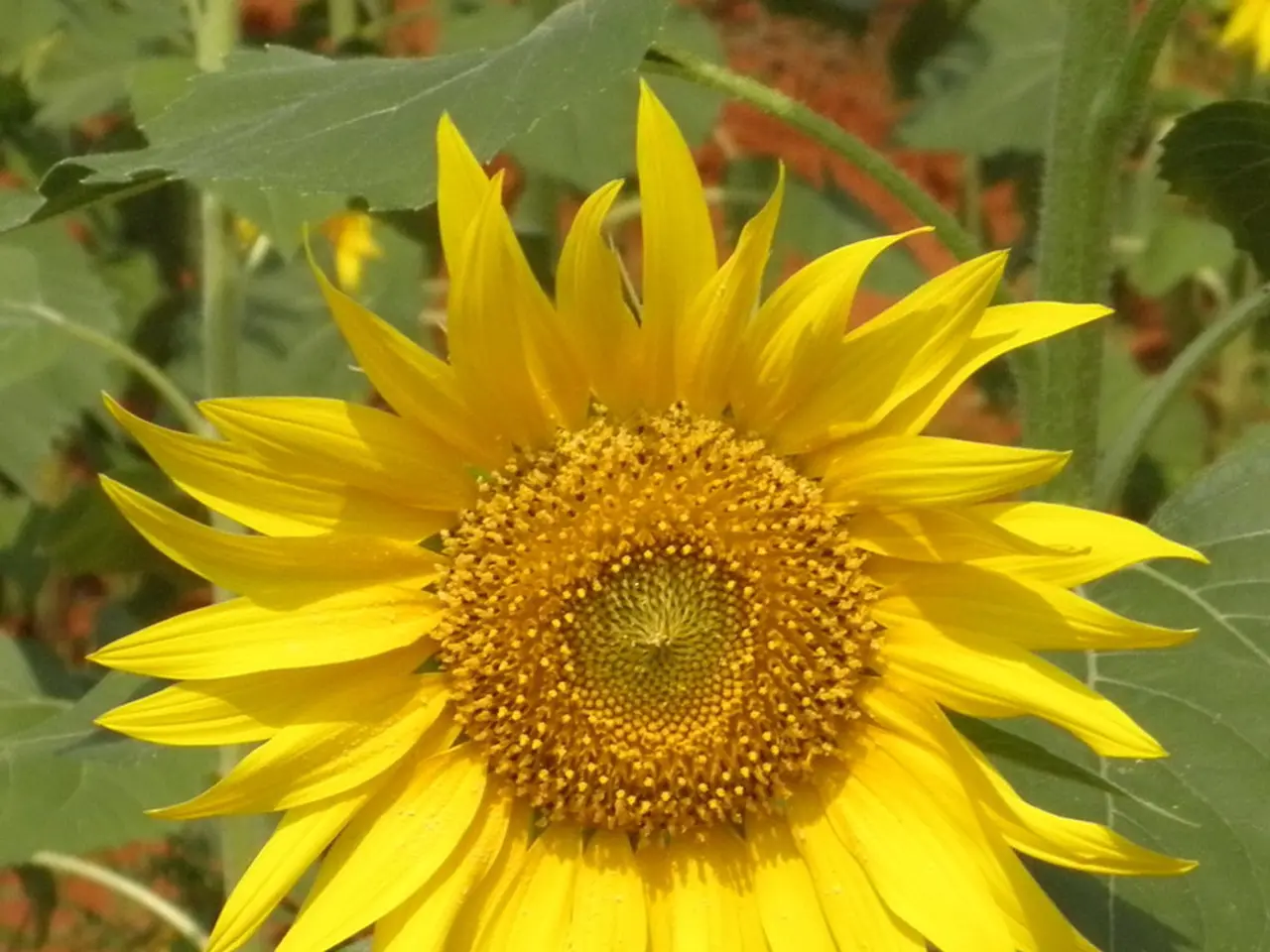Sunflower Regrowth: Examining the Yearly Growth Pattern of Sunflowers
Sunflowers, a popular choice for gardens and fields, belong to the genus Helianthus and are known for their vibrant, captivating blooms. These tall, majestic plants can dramatically transform a garden, but did you know that sunflowers come in two varieties: annual and perennial?
Annual sunflowers, such as the Common sunflower (Helianthus annuus), complete their life cycle within one growing season. They grow quickly from seed, bloom fully during that period—often continuously or intensively—then die after seed production, requiring replanting each year. Known for their quick, long-lasting summer blooms and easy, low-maintenance care, annual sunflowers are a great choice for those who prefer a one-season spectacular display.
On the other hand, perennial sunflowers live for multiple years, returning from the same root system annually. They generally have a shorter bloom period each year compared to annuals and may require a sunny location with moist, well-drained soil. While some are resilient in tougher conditions, their flowering is often more limited in duration compared to annuals. Perennials require less frequent planting but might need pruning or management to promote healthy regrowth and possibly staking for support during their life cycle.
When it comes to growth habits, annual sunflowers grow rapidly, reach maturity, flower, set seed, then die within one season. Perennial sunflowers, on the other hand, develop a more permanent root system, regrow each year, and mature to produce blooms seasonally.
Sunflowers thrive in full sun and require soil that drains well and has a pH between 6.0 to 7.5. They are not heavy feeders, but they do benefit from nutrients, such as slow-release, balanced fertilizer and compost or manure during the growing season.
Sunflowers serve as a food source and habitat for bees, butterflies, and birds. They can provide shade for lower-growing plants, act as natural trellises for climbing plants, and improve soil fertility.
When planting sunflowers, it's important to choose the right species, prepare the soil for planting, and use proper sunflower planting techniques. When addressing pests and diseases, it's important to use organic pesticides and fungicides only when necessary.
Larry Meyers, a gardening expert with over 10 years of experience, shares his insights on sunflowers and other gardening topics. He has written several posts on topics such as when to plant tulips in Missouri, snail bait safety for dogs, and when to plant pumpkins in Michigan for Halloween.
Whether you choose annual or perennial sunflowers depends on your preference. If you enjoy experimenting with new varieties each year and are willing to replant annually, annual sunflowers may be the right choice for you. On the other hand, if you prefer a low-maintenance garden feature that comes back each year, perennial sunflowers could be the perfect addition to your garden.
Remember, annual sunflowers have a single-season life span and must be replanted each year. Perennial sunflowers, on the other hand, come back each year from the same roots and have a more extensive root system than annuals. By early fall, the flower heads droop, signaling seed maturity. Harvested sunflower seeds can be replanted, consumed, or pressed for sunflower oil.
In conclusion, sunflowers are a versatile and beautiful addition to any garden. With their vibrant colours, ability to attract wildlife, and easy care, they are a great choice for gardeners of all levels. Whether you choose annual or perennial sunflowers, you're sure to enjoy their stunning blooms and the benefits they bring to your garden.
In line with their one-season lifespan, annual sunflowers are suitable for those who prefer to experiment with new varieties each year and are ready to replant annually. On the contrary, if you're seeking a low-maintenance garden feature that returns each year, opt for perennial sunflowers, which boast a more extensive root system compared to their annual counterparts.




